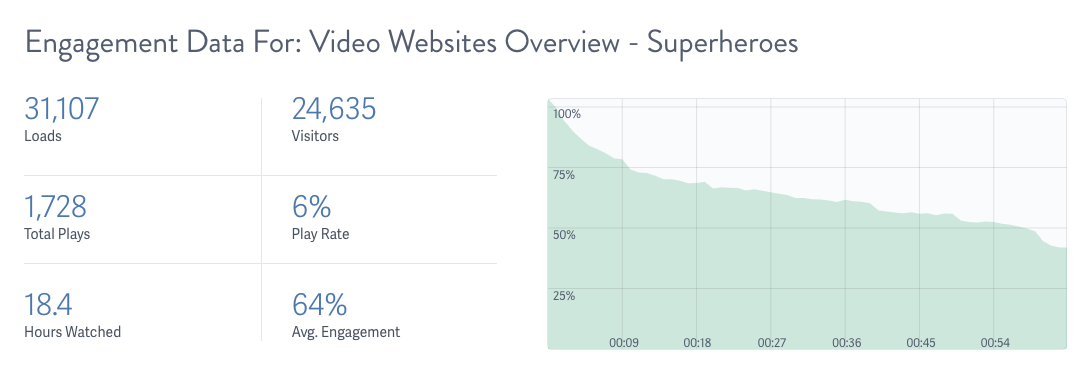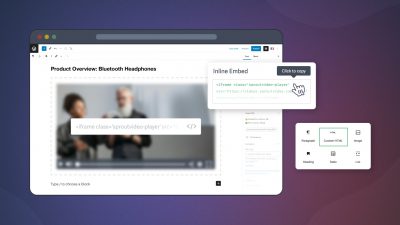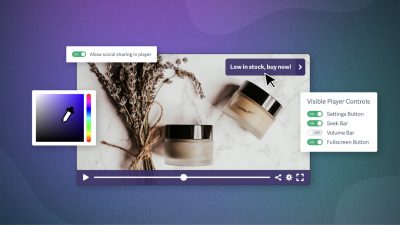One of the best ways to get people to watch your entire online video is to make sure it isn’t too long. But, what is “too long” for a video?
Turns out, it depends. It comes down to the platform where you’re sharing it and the complexity of your message, just as much as it depends on attention spans.
Following certain guidelines can help you keep viewers engaged and achieve higher viewing durations. Keep reading for a deep dive into the science behind attention spans, and specific recommendations for different platforms and content types.
First, Know Your Audience
It all starts with who you want to watch your videos, and what you want to achieve with video. Knowing your audience enables you to target your messaging precisely, and drive viewer engagement. This is key not just for video length, but also for how you craft the content to keep them watching.
Think about your favorite TV shows or movies. They all use cliffhangers, surprises, particularly funny moments, and other carefully applied scripting and editing techniques to ensure you keep watching. You can use similar methods to keep people’s eyeballs on your video until the very end.
Knowing what will appeal to your viewers is key. Regardless of length, people will keep watching if they are hooked by a well-written script and clever editing.
Device Matters
Part of knowing your audience involves more technical aspects, such as whether they are viewing on mobile devices or desktops. This actually makes a difference in how likely they are to finish watching your videos.
Ensure that your videos are mobile-ready to provide the best experience for these viewers. Consider the size of the screen when designing any text elements or other visuals for your video.
As data from Cisco makes crystal clear, “mobile video will increase 14-fold between 2013 and 2018, accounting for 69 percent of total mobile data traffic by the end of the forecast period.” Mobile video is growing very quickly, so it is wise to get ahead of the trend.
The fact that more people are finishing videos on mobile devices indicates that a longer video might work for a primarily mobile audience. For instance, if your videos are shared primarily on Facebook, then most people are probably accessing them on their phones or a tablet. Testing longer form content could be worthwhile on Facebook, especially since video drives so much engagement on that platform.
So, How Long Exactly?
The prevailing wisdom for the ideal video length has been that 3 minutes is an absolute maximum, and the shorter the better in general. This doctrine has also meant that most important information is presented early in the video in case viewers bounce after just a few seconds or a minute of watching.
Challenging that wisdom is actual data about viewer behavior. Pixability has found that viewing completion rates are up for long form content on YouTube.
The right length for a video varies according to where you’re sharing it, who you’re trying to reach, and the complexity of the message you need to get across. There is no single answer to the question.
Even if a platform imposes a maximum, you don’t need to use all of the time permitted. Focus on your message, and your concept, and see where you land.
Attention Spans
If you make a great video, people will watch it to completion whether it is 15 seconds or 15 minutes. However, quality isn’t the only factor at play. There is an actual biological reason for people’s short attention spans. Take the wildly popular TED Talks. They are all 18 minutes or less because research shows people have a hard time focusing for longer than that.
In a recent article by Carmine Gallo, he explains the human brain consumes glucose, oxygen, and blood flow at an astonishing rate for a 3 lb organ. When being used actively, such as when listening, thinking, or processing visual information (all activities required by video), the brain fatigues in about 10-18 minutes. That means most people can’t focus on anything longer than that without a break to recharge.
It’s also worth pointing out that TED Talks are nearly all around 18 minutes in length. Still many go viral and get viewed millions of times. This really speaks to the importance of quality over quantity. The imposed time limit forces presenters to really distill their ideas and communicate only the most important points necessary to comprehend the information.
All too often, longer videos have unnecessary segments, visual effects, and mixed messages. Think about what you really want to convey, and carefully layout how to get your point across. You’ll find yourself with an engaging video people are willing to watch no matter the length.
How to Tell How Much People are Watching
SproutVideo offers granular analytics that allow you to see exactly how much of your videos viewers are watching. Video engagement metrics provide a heat map of viewing activity, allowing you to identify popular segments and troublesome “drop-off” points in your clips.

Using this reporting, you can also improve your online hosted videos over time.
Have you noticed a connection between video length and viewer engagement? Let us know in the comments below or share with us on Twitter.








